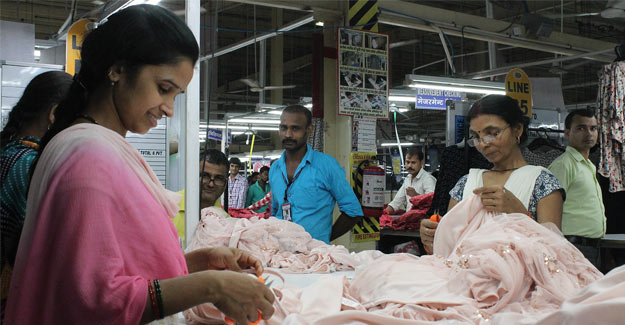Garment Workers Get Wages Below Urban Poverty Line
Garment Workers Get Wages Below Urban Poverty Line

In Karnataka in southern India, the minimum wage in the garment sector is only around Rs 8,000 a month. This is 25% below the urban poverty line of Rs 10,800 a month, at current prices, based on the Rangarajan Committee of the Government of India.
The industry, however, refuses any substantial increase in wages on the plea of competitiveness. A draft minimum wage notification in February 2018 offered workers in Bengaluru Rs 11,587 a month. The industry opposed this, claiming that it would undermine profitability. This opposition is legally untenable. The Supreme Court has clearly held that competitiveness is not a ground to refuse minimum wage payment. Furthermore, garment manufacturing in Karnataka is mostly for export to developed countries. In effect, BPL wages are subsidising consumers in the developed world. In 2002, and again in 2010, the Labour Department obliged industry by lowering the notified wages, claiming a clerical error. History repeated itself, but as tragedy both times, for the workers. On a legal challenge by the Garment and Textile Workers' Union (GATWU), the High Court of Karnataka in 2013 ruled that the Labour Department's actions of lowering the minimum wage were not legal.
This time around, while withdrawing its February 2018 draft notification, the Labour Department, instead of using the 'clerical error' excuse, stitched another yarn: the garment sector being similar to the textiles (silk), textiles (yarn), and printing and dyeing industries, different wages for these four sectors, it alleged, might result in labour unrest. It simultaneously withdrew the notification for all four sectors, promising equal wages across the sectors.
The farce lies in the detail. The February 2018 notification for garments had actually equalised wages in all four sectors. This dispute has recently been referred to tripartite negotiation by the new Chief Minister of Karnataka. The simmering discontent among workers does not always find an outlet, given their vulnerability. However, the spontaneous Provident Fund (PF) strike by garment workers in April 2016, triggered by the announcement of arbitrary changes to the PF regime, was a clear indication of the stresses contained in the sector. How do garment workers survive on such low wages? In many families, there are two wage-earners earning subsistence wages. An ILO study by the National Law School of India University, however, estimated that one in seven garment families has only a single woman wage-earner.



 textileexcellence
textileexcellence 







